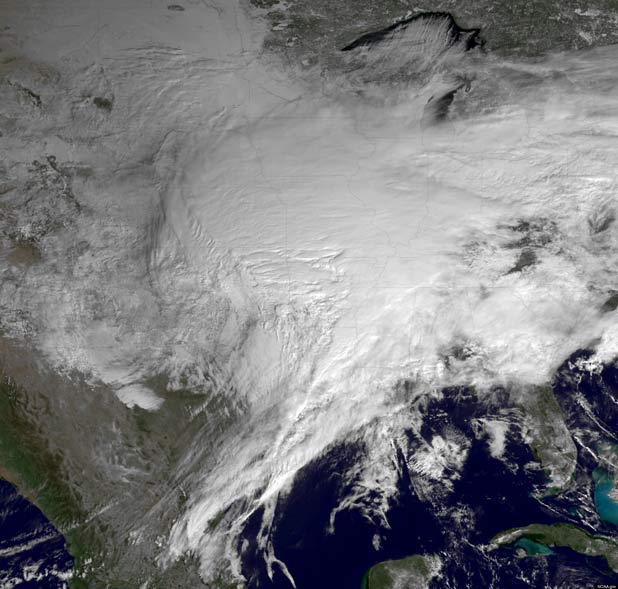The decision by O'Hare-based airlines to cancel all their flights for a day and a half was certain to have ripple effects at other U.S. airports, said transportation expert Joseph Schwieterman.
"Effectively shutting down America's most important aviation hub hits the system immeasurably hard," he said about O'Hare. He said other U.S. airports not even in the path of the storm should start to see delays themselves right away as a result.
The city's smaller airport, Midway International, hoped to resume flights Wednesday afternoon. Hundreds of flights were canceled at airports in Detroit, Milwaukee and Madison, Wis., and Tulsa, Okla.
Providing a ray of hope to those battered by the storm, the world's most famous weather forecaster - with four legs - predicted an early spring.
Punxsutawney Phil's handlers told Groundhog Day revelers at Gobbler's Knob, a tiny hill in Punxsutawney, Pa., that the groundhog had not seen his shadow, meaning winter will end within six weeks, according to tradition.
Associated Press writers Karen Hawkins, Don Babwin, Sophia Tareen, Tammy Webber and Barbara Rodriguez in Chicago; Tom Coyne in South Bend, Ind.; Dinesh Ramde in Milwaukee; Ken Miller in Oklahoma City; Patrick Walters in Philadelphia; Chris Carola in Albany, N.Y.; Jim Salter in St. Louis; and Justin Juozapavicius in Tulsa, Okla., contributed to this report.


